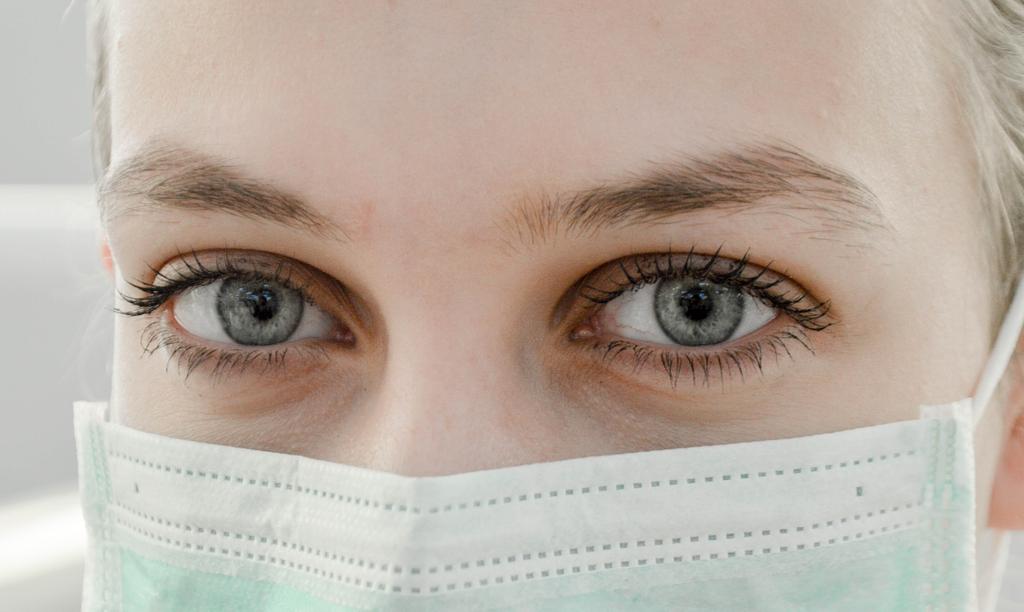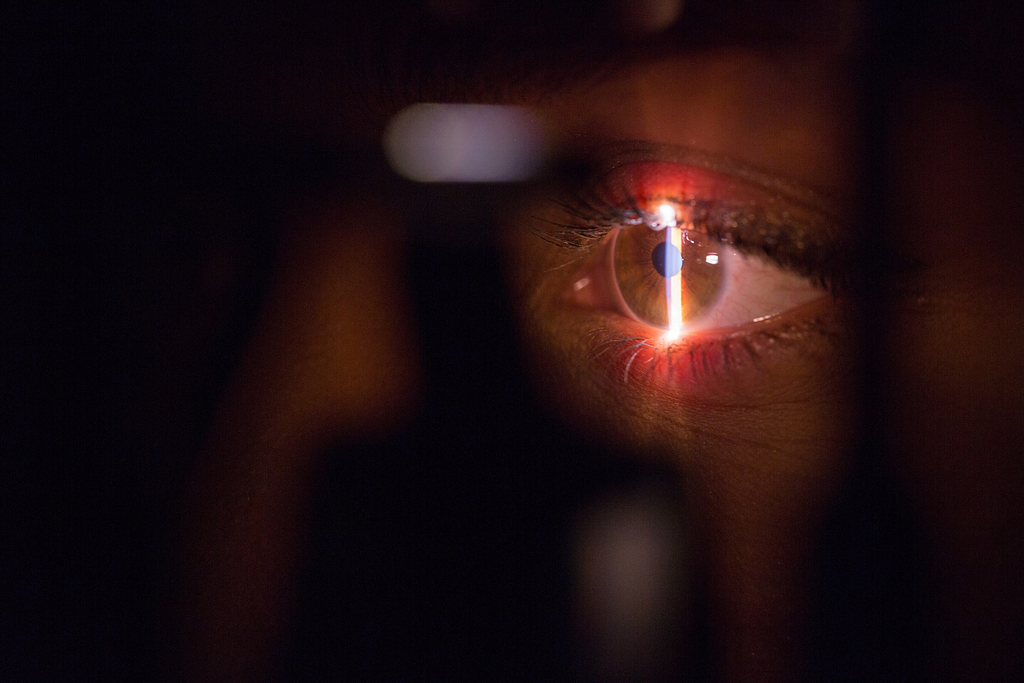.jpg)
While adherence to therapy is undoubtedly important, at least equally important is the patient’s adherence to a prescribed follow up schedule. Therapies can fail over time and missing follow up appointments can be particularly hazardous for fast progressors-practitioners should stress the importance of good follow up
The Science behind the Tip Clinical trials have shown us average rates of progression and average ideal IOP readings for populations of patients...
November 30, 2019
.jpg)
Consider using a topical NSAID, or steroid, post SLT laser
The Science behind the Tip There is widespread variation in post laser treatment regimes. In a recent randomized, double-masked, multi-center...
October 31, 2019
.jpg)
Consider additional 10-2 visual field testing for diagnosing glaucoma, as limiting to 24-2 or 30-2 tests will frequently miss or underestimate paracentral field defects
The Science behind the Tip (1,2) It is well-established that damage to macular retinal ganglion cells (RGCs) occurs early in glaucoma (1). Not...
September 30, 2019
.jpg)
When performing a laser peripheral iridotomy (LPI) for primary angle closure the position of the iridotomy in relation to the eyelid should always be considered
The Science behind the Tip (1,2,3) The incidence of reported dysphotopsias after an LPI varies from 2% to 11% with linear dysphotopsia and...
July 31, 2019
.jpg)
Avoid the use of monocular prostaglandin analogue medication
The Science behind the Tip Where glaucoma predominantly affects one eye, monocular therapy may be used. Prostaglandin analogues are widely used as...
July 31, 2019
.jpg)
A glaucoma patient who progresses despite presumed good adherence might be using inadequate or insufficient technique when applying the anti-glaucomatous eye drops
The Science behind the Tip It is well known that if poor technique is used when a drop is applied to the eye it does not reach its target. This can...
June 30, 2019
.jpg)
Selective Laser Trabeculoplasty (SLT) can be considered as the first treatment for newly diagnosed patients with ocular hypertension and mild to moderate primary open angle glaucoma
The Science behind the Tip The LiGHT trial compared two treatment pathways for treatment naïve ocular hypertension and mild to moderate glaucoma....
May 31, 2019
.jpg)
Ocular coherence tomography (OCT) should be used cautiously in the context of uveitic glaucoma
The Science behind the Tip Patients with uveitis have a heightened risk of developing secondary glaucoma. Ocular Coherence Tomography (OCT) imaging...
March 31, 2019
.jpg)
Depression may follow a diagnosis of chronic glaucoma, but depressive symptoms are less likely to be present one year later
The Science behind the Tip It is common for a newly-diagnosed patient with glaucoma to experience symptoms of depression (1,2). Patients who are...
March 01, 2019
.jpg)
Early bleb revision usually results in successful resolution of hypotony maculopathy after trabeculectomy with mitomycin C
The Science behind the Tip Hypotony maculopathy is characterized by painless loss of vision usually more than three months after glaucoma...
January 31, 2019
.jpg)
Children using topical corticosteroids for the treatment of allergic conjunctivitis must have their intraocular pressure regularly checked
The Science behind the Tip 30-40% of the population respond to topical steroids by increasing their IOP (1). A steroid response is commonly found...
December 31, 2018
.jpg)
The results of trabeculectomy with mitomycin C are significantly improved in children with glaucoma secondary to juvenile idiopathic arthritis if they are on immune-modulatory treatment
The Science behind the Tip Juvenile idiopathic arthritis (JIA) is the most common systemic disease associated with childhood anterior uveitis....
November 30, 2018
.jpg)
Microperimetry may be a more sensitive method of detecting a small glaucomatous defect close to fixation, than standard automated perimetry and OCT analysis of the retinal nerve fibre layer (RNFL)
The Science behind the Tip Microperimetry is a form of fundus-tracking perimetry that can detect reduced retinal sensitivity close to fixation more...
October 31, 2018
.jpg)
A glaucoma drainage device may be more effective than trabeculectomy in lowering IOP after keratoplasty, but is more likely to result in graft failure
The Science behind the Tip A well-controlled intraocular pressure (IOP) after penetrating keratoplasty (PK) is essential for graft survival and to...
September 30, 2018
.jpg)
When determining a therapeutic approach to a patient with glaucoma, the life expectancy of the patient needs to be considered
The Science behind the Tip Patients who present with early glaucoma who have a short life expectancy are unlikely to go blind from glaucoma in...
June 30, 2018
.jpg)
The insertion of a punctal plug improves ocular comfort and results in a modest reduction of IOP in patients with glaucoma who are using topical medication
The Science behind the Tip Patients with ocular hypertension and chronic glaucoma have a higher prevalence of ocular surface disease (OSD) than...
May 31, 2018
.jpg)
In a patient with pigment dispersion syndrome, the most significant ocular risk factor for conversion to glaucoma is an IOP above 21mmHg on presentation
The Science behind the Tip Pigment dispersion syndrome tends to occur in young myopic white men. There are genetic factors that underly the risk...
April 30, 2018
.jpg)
Validated prediction models are helpful to determine the risk of an individual with ocular hypertension developing chronic glaucoma
The Science behind the Tip Raised intraocular pressure (IOP) is an important risk factor for the development of glaucoma and can be modified with...
March 31, 2018
.jpg)
Measuring the intraocular pressure (IOP) not only in sitting, but also in supine position, may help to identify the 24-hour IOP characteristics of your glaucoma patient
The Science behind the Tip It is well known that each patient has an individual circadian IOP pattern. Studies have shown that up to two thirds of...
February 28, 2018
.jpg)
Treatment of ischaemic central retinal vein occlusion with prophylactic anti-VEGF injections reduces the risk of neovascular glaucoma, but careful long-term monitoring for ocular new vessels remains essential
The Science behind the Tip Approximately 20% of central retinal vein occlusions (CRVO) are ischaemic and of those, 45% develop neovascular...
January 31, 2018
.jpg)
OCT measurement of the retinal nerve fibre layer is useful for detecting progression in early glaucoma
The Science behind the Tip Both visual field testing and optical coherence tomography (OCT) measurements can be used to detect glaucomatous...
December 31, 2017
.jpg)
Bleb encapsulation after trabeculectomy can be successfully treated by using aqueous suppressant treatment for a short period
The Science behind the Tip Bleb encapsulation may occur 2 to 6 weeks after trabeculectomy, when an elevated, tense, dome-shaped bleb develops with...
November 30, 2017
.jpg)
A patient who presents with raised intraocular pressure or glaucoma and distended episcleral veins in one eye needs to be investigated for a spontaneous carotid – cavernous fistula
The Science behind the Tip A carotid – cavernous sinus fistula is an abnormal vascular communication between the carotid artery system and the...
October 31, 2017
.jpg)
Glaucoma associated with congenital aniridia is difficult to treat, but tube-shunt drainage devices offer the best results
The Science behind the Tip Congenital aniridia is a rare bilateral developmental disorder which is inherited in an autosomal dominant fashion in...
September 30, 2017
.jpg)
In a young patient with acute congestive angle closure or recurrent angle closure in the presence of a patent laser iridotomy, the underlying cause is usually plateau iris configuration
The Science behind the Tip Plateau iris configuration is characterised by a closed anterior chamber angle in association with a flat iris plane and...
July 31, 2017




.jpg)
.jpg)


.jpg)

